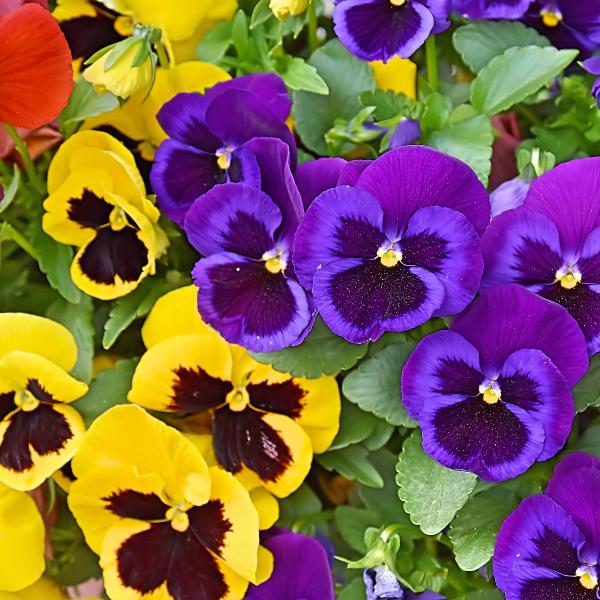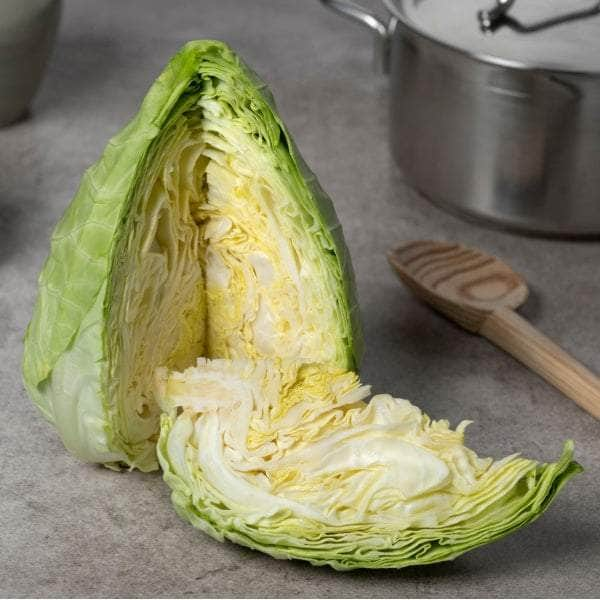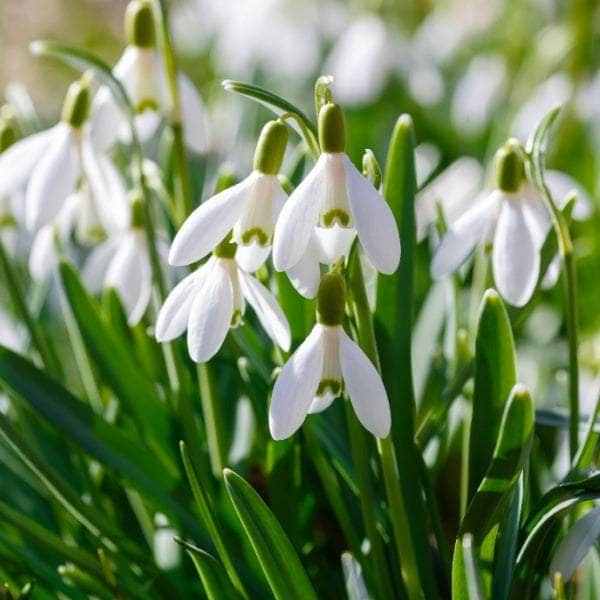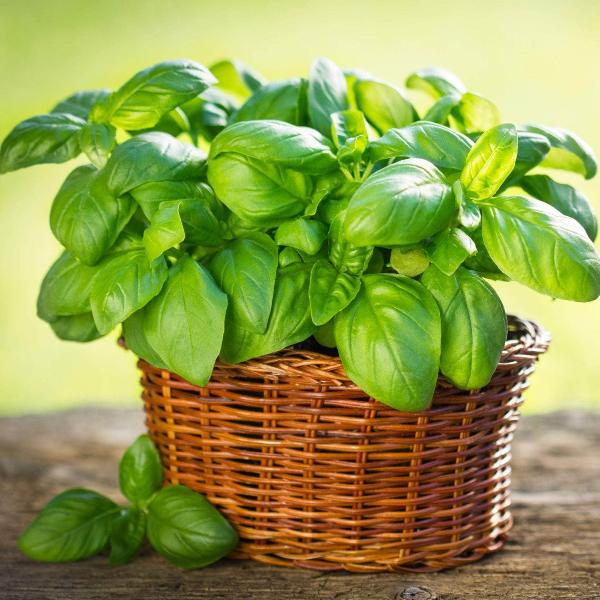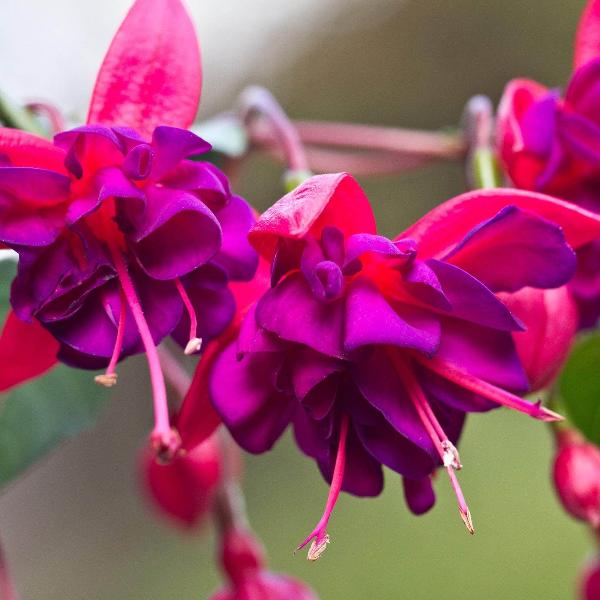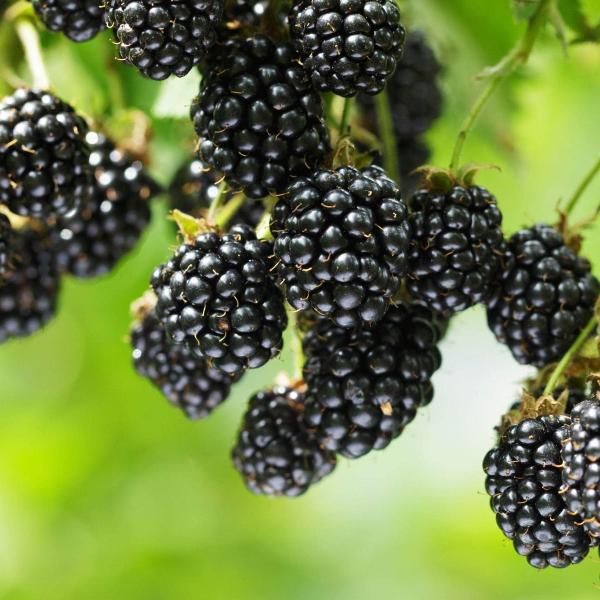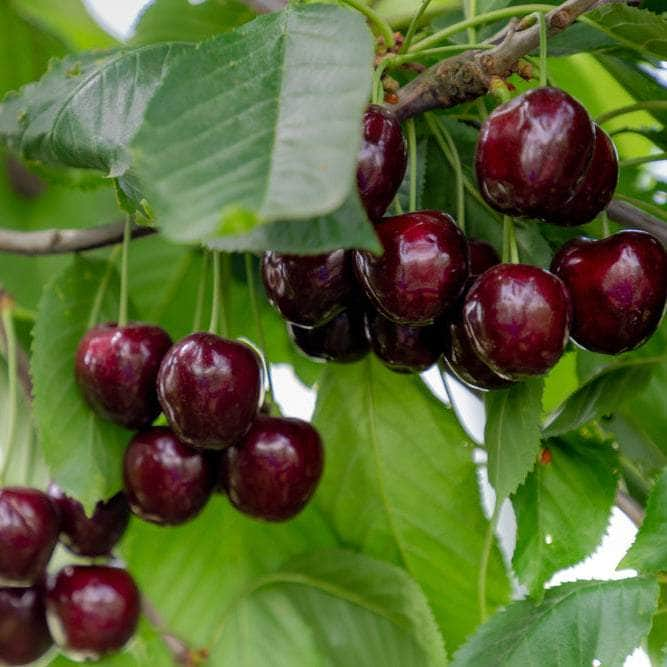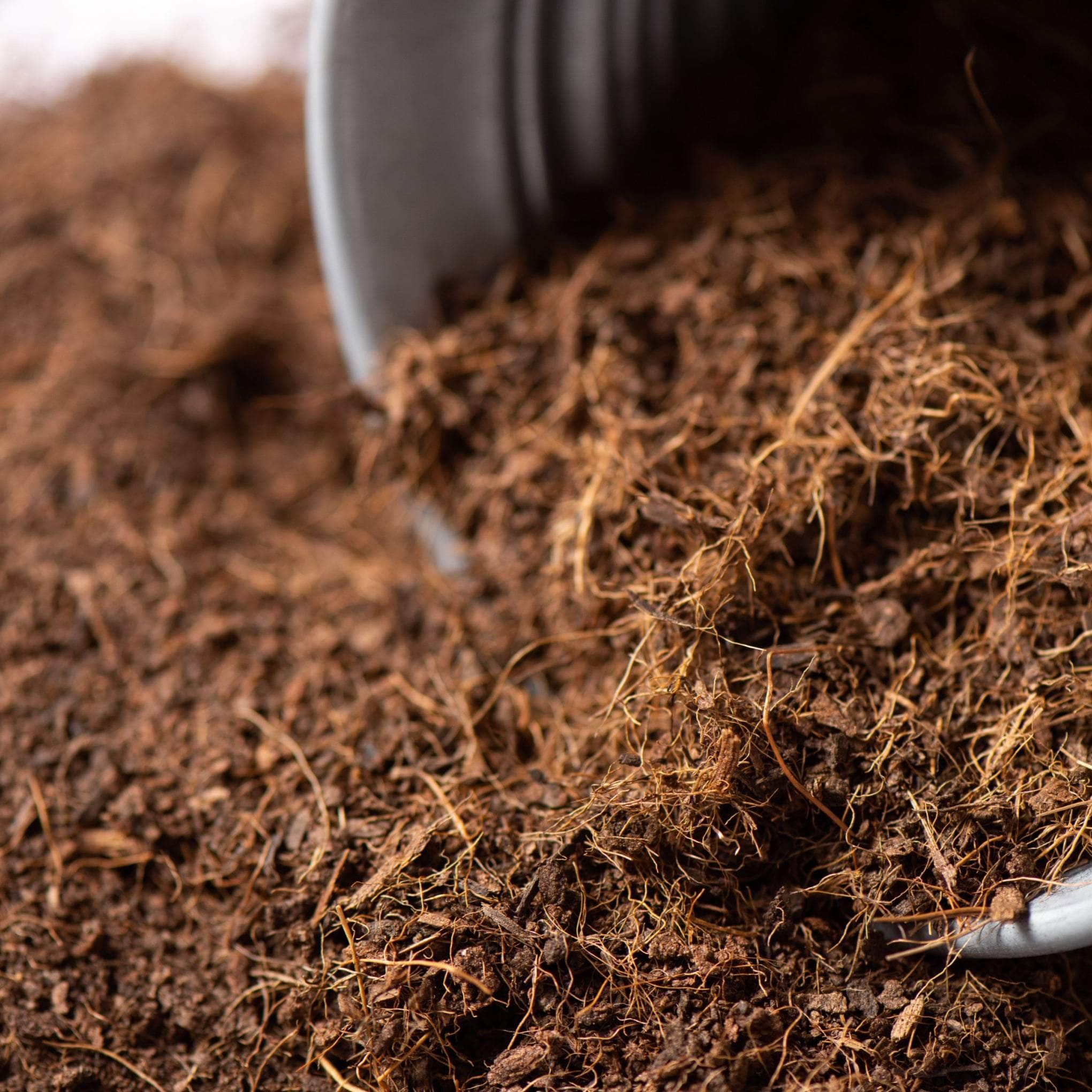The Comprehensive Guide to Growing Marigold Flowers
Welcome to our comprehensive guide on growing marigold flowers, a vibrant addition to any garden. Whether you're a seasoned gardener or a green-fingered novice, this guide will help you navigate the colourful world of marigolds.
From the compact French Marigold to the sprawling Signet Marigold, we'll delve into the different types of marigolds and their unique characteristics. We'll also share top tips on how to plant marigold seeds, whether in pots or planters, and how to care for your marigold plants.
From dealing with common pests and diseases to understanding the benefits of marigolds as companion plants, we've got you covered. So, whether you're planning your garden or looking to add a splash of colour with the yellow and orange series of marigolds, join us as we explore the world of these beautiful blooms.
Let's get started on your journey to grow marigold flowers that will be the envy of your neighbourhood.
Understanding Marigold: A Complete Marigold Flower Guide

Dive into the world of marigolds, a flower that's more than just a pretty face. This guide will help you understand the different types of marigolds, their significance, and how to grow them successfully. Whether you're a seasoned gardener or a beginner, this guide will provide you with all the information you need to grow vibrant and healthy marigolds.
From the petite signet marigold to the towering African marigold, each type has its unique charm and benefits. Let's explore the world of marigolds together.
The Different Types of Marigold
African Marigold (Tagetes erecta) - Known as the tallest type of marigold, this variety can grow up to 3-4 feet in height. With large, pom-pom-like flowers, these can thrive even in dry conditions. Despite the name, this species is native to Mexico and Central America, not Africa.
French Marigold (Tagetes patula) - Smaller and bushier than the African Marigold, French marigolds often grow wider than they are tall. With dainty, eye-catching flowers, they can grow from 6 inches to 2 feet tall.
Signet Marigold (Tagetes tenuifolia) - Perfect for hot, dry locations, these petite marigolds make a great edging plant. They typically do not grow more than a foot in height.
Pot Marigold (Calendula officinalis) - Not a true marigold, these are often mistaken for the Tagetes variety. Native to Southern Europe, Pot Marigolds have edible flowers and are known for their medicinal properties.
American Marigold - Another name for Tagetes erecta, these marigolds are known for their ability to grow tall and withstand drier conditions.
It's recommended to choose the type of marigold that best suits your garden conditions. Whether you're a seasoned gardener looking to diversify your flower marigold types or a beginner thinking to buy marigold from the nursery, understanding the different types of marigolds can assist in making an informed decision when it comes to growing marigolds.
The Significance of Marigold Flowers
The marigold flower holds a significant place in horticulture and garden design, acting both as a striking decorative feature and a practical addition to vegetable gardens. Its vibrant colours, ranging from creamy white to golden orange, catch the eye and breathe life into any outdoor space. Whether you opt for Signet, French, or another type of marigold, each variety has its own unique appeal.
Possibly one of the most appreciated qualities of the marigold plant is its pest-repelling attributes. When growing marigold alongside vegetable crops, it can act as a biological ward against common pests. This feature aids in maintaining a healthy and fruitful vegetable garden without relying on chemical repellents.
Due to its hardiness and adaptability, people looking to buy marigold for their gardens will find it an effortless flower to cultivate. Whether it's grown from seed, purchased as a pot marigold from the nursery, or a more mature marigold plant, this bright and beautiful flower is a robust and easy-care option. It's considered an ideal choice for those who don't have a lot of spare time to devote to gardening but still want their outdoor spaces to look inviting.
Another notable aspect of the marigold flower is its edible qualities. Certain varieties can be used in salads or brewed into a tea. Furthermore, the flower has a reputation in traditional medicine for its anti-inflammatory properties, making the marigold more than just a pretty face in the garden.
In summary, the marigold's significance extends beyond its captivating visual appeal. Its low maintenance nature, pest repelling abilities, as well as its edible and medicinal properties, cement the marigold's status in gardens worldwide. For those thinking of growing marigold, adding this colourful, versatile flower to the garden will not disappoint.
Planting and Growing Marigold Flowers: Top Tips

In the world of gardening, marigolds hold a special place with their vibrant hues and easy-to-grow nature. This section will provide you with top tips on planting and growing marigold flowers, whether you're a seasoned gardener or a beginner.
From planning your garden to sowing seeds and nurturing young plants, we'll guide you through the process. We'll also delve into the art of growing marigolds in pots or planters, perfect for those with limited space or a love for container gardening. Let's dive in and help your garden grow with the beautiful combination of yellow, orange, and maroon marigolds.
Planning Your Garden for Marigold Plantation
Planning your garden for the cultivation of marigolds is the first step to successfully grow these vibrant hued flowers. Begin by assessing the location, marigolds thrive in areas with full sun exposure, they're nature's glowing orbs. With available colours from beautiful yellows to rich maroons, their fiery shades are radiant in the sun.
Regardless of where you decide to plant these gems, the soil needs to be well-drained. Marigolds hate wet feet and waterlogged soil will quickly cause them to rot. Just like we do, they detest the feeling of soggy boots!
Remember, your garden isn't just a canvas for your individual artistic expression, it's a habitat too. Marigolds pull double duty on this, as they are not just decorative but also serve as wonderful edging plants, warding off certain pests.
Decide whether you're starting from seeds or planting young marigolds. Though more challenging, growing marigolds from seeds presents you with the miracle of seeing a tiny seed transform into a living, growing entity.
How to Plant Marigold Seeds
Begin your marigold journey by sowing seeds directly into well-tended soil. Here's a step-by-step process to do the same:
Moisten your soil, then plant marigold seeds about 1 inch apart and no deeper than an inch.
Thoroughly water after planting to ensure the soil fully covers the seeds.
Watch out for germination. This is expected to occur within 5-8 days when soil temperature falls between 70-75°F (21-24°C), ensuring your seeds commence their growth journey.
Once the seedlings develop new leaves, enact a thinning process to circumvent overcrowding.
For French and Signet marigolds, space plants to around 8-10 inches apart (20-25 cm). African marigolds should be given a slightly more generous spacing of 10-12 inches apart (25-30 cm). This gives them ample room to grow and flourish.
While French marigolds are adept at starting from seeds, African marigolds are best purchased as young plants due to their tardy flower-blooming process. Whichever plant variety you chose, with careful attention and proper care, you'll soon have a vividly coloured garden flourishing with the combination of yellow, orange and maroon shades of marigolds.
If your soil is nutrient-deprived, you may want to add a granular, slow-release 5-10-5 fertiliser in the planting hole to boost growth. Happy gardening!
Growing Marigold in Pots or Planters
If you're limited on space or simply prefer container gardening, growing marigold in pots or planters is a viable option. Here's a simple guide you can follow:
Pot selection: Choose a pot or planter that's at least 20cm wide and deep. Ensure it has good drainage. The size should be suitable for the mature height and width of your marigold variety.
Soil preparation: Fill your pot with a good quality soil mix. You can source this from your local nursery.
Planting: Gently remove the young marigold plant from the nursery pot. Tease the roots lightly if they're compact. After placing the plant into your pot, backfill around it with more soil.
Watering: Give them a good water to start with, ensuring it runs free from the base of the pot for optimum drainage.
Marigolds can turn any pot or planter into a vibrant yellow and orange series with shades ranging from yellow orange to maroon! Their compact size and bright colours also make them excellent edging plants. With these steps, you'll be well on your way to successfully grow marigold flowers in pots or planters.
Marigold Plant Care and Fertilising

In the world of gardening, marigolds hold a special place with their vibrant colours and easy-to-grow nature. However, to truly let them shine in your garden, understanding the nuances of marigold plant care and fertilising is essential. This section will delve into the specifics of nurturing these beautiful blooms, from the right watering techniques to the ideal fertilising schedule.
Whether you're a seasoned gardener or a beginner, these tips will help you cultivate a thriving marigold garden. Let's explore how to keep your marigolds healthy and vibrant, and how to tackle common pests and diseases that may threaten their growth.
How to Care for Your Marigold Plants
Marigold plant care requires some granular specifics that once implemented can lead you to a gardeners' world of vibrant hues.
Pruning: Encourage bushier growth in your marigolds by pinching off the tops of the plants. This stops the plant from becoming leggy and improves flower head blooming.
Watering: Marigolds favour a ‘water-well, dry, repeat’ process. During high heat, increase watering frequency. Always water at the base rather than from overhead to avoid conditions like powdery mildew.
Avoid Over-Fertilising: Despite what the companion planting chart might suggest, refrain from over-fertilising marigolds during growth. Nitrogen-rich diets lead to excess foliage at the expense of flowers.
Mulching: Apply a layer of mulch between plants, not only to suppress weeds but also to retain soil moisture. This is especially helpful when the plants are young.
Dead Heading: Regularly removing dying blossoms will encourage profuse blooming. Gardeners would agree that this small act can retain the vibrancy of your marigold patch.
Caring for your marigolds is not a meticulous task once you understand their preferences. These vivid companion flowers, with the right mix of care and fertilising, can turn your garden into a marigold wonderland.
Fertilising Your Marigold Plants
Fertilising marigolds doesn't require a rigorous schedule or special products. Follow these simple steps:
If your soil lacks nutrients, consider incorporating a granular fertiliser during initial planting.
For marigolds grown annually, a single application of a balanced fertiliser in the spring is adequate.
Mature marigolds might benefit from an additional feed in early autumn.
Avoid excess fertilisation as it encourages a leafy growth at the expense of the flowers.
Instead of commercially available fertilisers, consider using compost premium soil improver to retain moisture and nutrients in the soil.
Healthy fertilisation practices contribute significantly towards marigold plant care and health. However, it's necessary to remember that each locale has unique soil conditions, and your marigolds' nourishment requirements may vary. An understanding of the specific nutrient profile of your soil can prove helpful in providing optimal care and fertilising to your marigold flowers.
Dealing with Common Marigold Pests and Diseases
Despite the marigold's reputation as a sturdy, easy-to-care-for plant, it isn't completely immune to pests and diseases. Here's a brief breakdown of the common aggressors and some preventative and curing measures:
Snails and Slugs: These slimy creatures enjoy munching on the leaves and stems of marigolds. You can use slug bait, install protective barriers, or conduct a torchlight hunt at night to eradicate them from your garden.
Aphids: These tiny insects can cause significant damage by sucking the sap which leads to wilting, yellowing, and distorted growth. A blast of water or the application of insecticidal soap should suffice in mild cases, while neem oil can be used for severe infestations.
Spider Mites: Persistent in particularly dry and hot climates, these pests cause visible damage to the foliage. Regularly spraying your plants with water will keep them at bay.
Powdery Mildew: This is a fungal disease that leaves a white, powdery coating on the leaves, often resulting in stunted growth and reduced flowering. To prevent this, avoid overhead watering, improve air circulation, and consider using fungicides.
Nematodes: These microscopic worms can attack root systems of various crops. It is more common in farming practices and not always relevant to the backyard gardener.
Marigolds actually habitual pests like aphids and nematodes. Predominantly, the French Marigold variety is known to deter harmful nematodes. However, being savvy, watchful gardeners can help ensure your marigolds thrive and continue to brighten your garden world.
Growing Marigold Flowers from Seeds

Growing marigold flowers from seeds is a rewarding process that allows you to witness the full life cycle of these vibrant plants. Whether you're a seasoned gardener or a beginner, this method offers an affordable and straightforward way to fill your garden or pots with beautiful marigolds.
Starting marigolds from seeds gives you the opportunity to select from a wide variety of species, including the popular French and African marigolds. This process also allows you to control the growing conditions from the very beginning, ensuring your marigolds have the best possible start in life.
How to Start Marigold from Seeds
Gather all your materials: You'll need marigold seeds, quality soil, and either garden space or pots, depending on where you want your marigold to grow. Whether you're growing in a garden or pots, ensure the soil is free-draining.
Sowing the seeds: Marigold seeds should be sown about 1 inch apart (2.5 cm) and no more than 1 inch deep (2.5 cm) in the soil. This rule applies whether you're garden-growing marigold from seeds or using a pot or planter.
Keep the soil conditions optimal: Marigolds need warm, well-prepared soil with a temperature range between 70-75°F (21-24°C) to germinate. Seeds will typically sprout within 5-8 days in these conditions.
Thin the sprouts: Once the seedlings develop new leaves, they should be thinned to prevent overcrowding. Space French and Signet types 8-10 inches apart, while African marigolds should be spaced 10-12 inches apart.
While marigolds can be quite forgiving, these steps can increase your likelihood of success in growing resilient, blooming marigolds. Happy gardening!
Transplanting Marigold Seedlings
Transplanting marigold seedlings is an integral part of their growth and requires careful attention. Here's a step-by-step approach to ensure a seamless transition from their nursery pot to the garden or planter:
Prep the Garden or Planter: Be sure the spot you choose gets full sun. Marigolds require ample sunlight to bloom vibrantly.
Remove the Seedlings: Gently remove the marigold seedlings from their nursery tray or pot. It's crucial not to damage the tender roots during this process.
Dig an Appropriate Hole: The hole should be broad and deep enough to accommodate the root ball of the marigold. Incorporate some well-rotted compost if the soil is poor.
Place the Seedling: Position the marigold into the hole, ensuring the top of the root ball is level with the soil surface. The plant will establish more rapidly if planted at the right depth.
Water Immediately: After planting, water the marigold generously. This gives the plant a good start and helps establish the roots in their new environment.
Transplanting marigolds, whether you're moving them from a garden growing marigold from seeds or as bought from a nursery, contributes to the marigold and cosmos companionship in the gardeners' world. So, whether you choose to start from seed or buy marigold plants, transplanting them appropriately can make a significant difference in their growth cycle. Deadheading spent flowers, moreover, not only enhances the plant's appearance, but also prompts more blooms to form.
Marigold as a Companion Plant

Marigold's role as a companion plant is a testament to its versatility and adaptability. This vibrant flower not only adds aesthetic value to your garden but also serves a practical purpose in promoting a healthier, more productive garden ecosystem. Whether you're planting in a pot or planter, or directly in premium soil, marigolds can significantly enhance your gardening experience.
Their compatibility with a variety of plants, from vegetables to other flowers, makes them a valuable addition to any companion planting chart. Let's delve deeper into the world of marigold companion planting and discover how to maximise the benefits of this remarkable flower.
Benefits of Marigold as a Companion Plant
Marigold flowers are far more than just a garden decoration. As a companion plant, their usefulness escalates drastically. Their intense aroma serves as a natural deterrent for many garden pests. Nematodes, aphids, and even whiteflies are effectively kept at bay with marigolds. Each brightly coloured blossom works tirelessly, safeguarding your garden's health and vitality.
Moreover, marigold's companion planting benefits extend beyond pest control. They can enhance overall plant health, directly impacting vegetable yield. Factoring in marigolds in your garden layout can optimise the conditions for plants like tomatoes, cucumbers, and peppers, promoting better growth and productivity.
Not just pests, marigolds have shown effectiveness in repelling larger annoyances such as deer and rabbits. Your garden remains a safe haven, the constant target of damaging critters deftly avoided with marigolds' watchful presence.
Additionally, marigolds are an attractant for beneficial insects. Pollinators find marigold's vibrant colours irresistible, contributing to a healthier, more bio-diverse ecosystem within your garden. Balancing pest control with pollination, marigold serves a dual-purpose role as a companion plant.
Best Companion Plants for Marigold
Potatoes: Marigolds effectively repel nematodes that can harm these underground tubers.
Tomatoes: Companion planting with marigolds can deter whiteflies, enhancing tomato health.
Cucumbers: Marigolds safeguard these crunchy greens from pest invasions.
Pumpkins: The vibrant flowers provide protection against common pumpkin pests.
Peppers: Marigolds' strong aroma can repel pests targeting pepper plants.
Melons: Companion planting with marigolds promotes a healthier environment for growing these fruits.
Asparagus: Protect your asparagus from destructive pests with marigold companions.
Basil: Marigolds enhance the health and productivity of this herb.
Onions: Include marigolds in Allium cultivation for an effective pest control strategy.
Roses: Marigold companionship helps roses achieve a pest-free growth.
Final Thoughts on Growing Marigold Flowers

In conclusion, the vibrant and versatile marigold flower is a must-have for any garden. Whether you're a seasoned gardener or a novice, the marigold's easy care, pest-repelling properties, and stunning colours make it an ideal choice. From the compact French marigold to the sprawling signet marigold, there's a type of marigold to suit every garden grow.
Remember, planning your garden and preparing your soil with a premium soil improver are key steps to ensure your marigolds thrive.
Don't forget to dead head regularly to encourage more blooms and keep your marigolds looking their best. So, why wait?
Start from seed or buy marigold plants from the nursery and add a splash of yellow, orange, and maroon to your garden today. Happy




